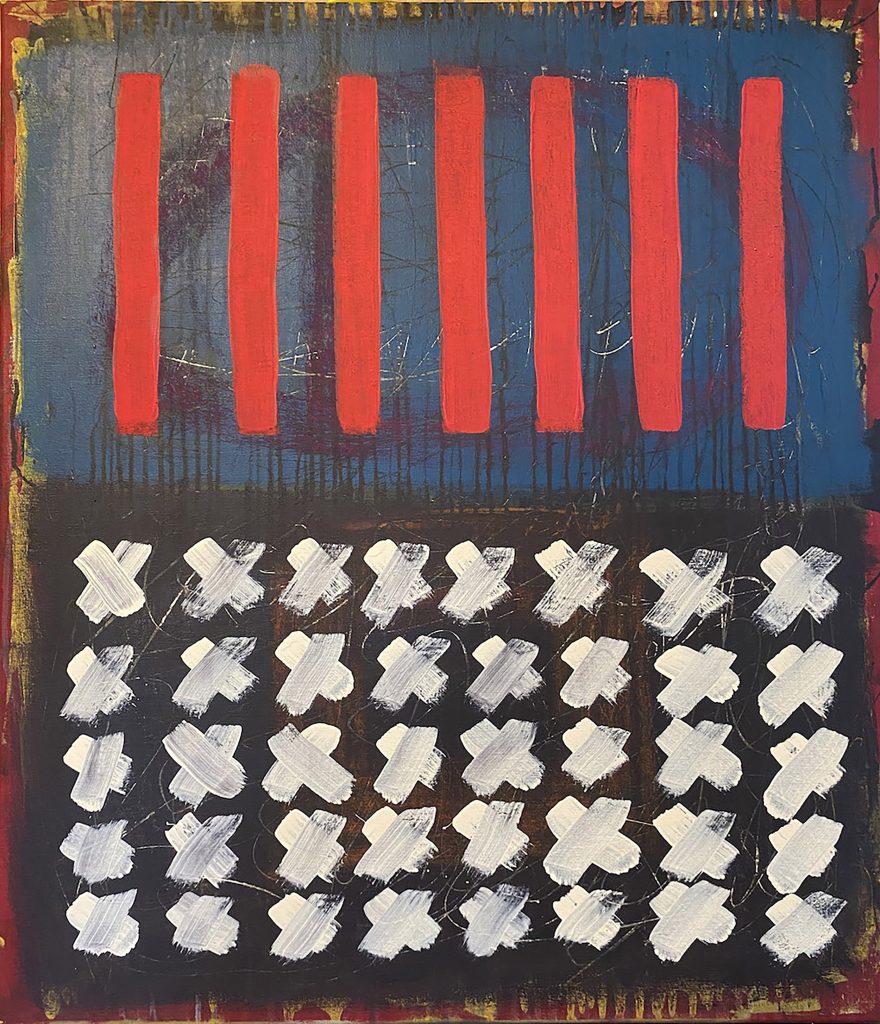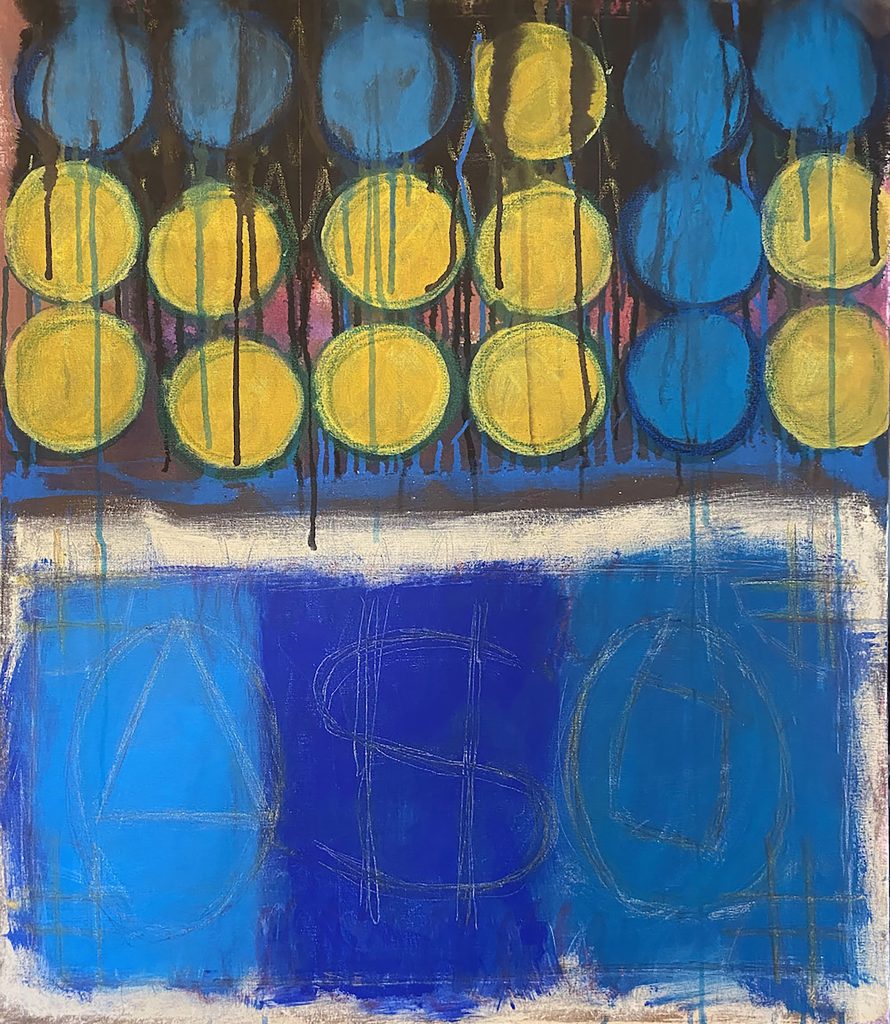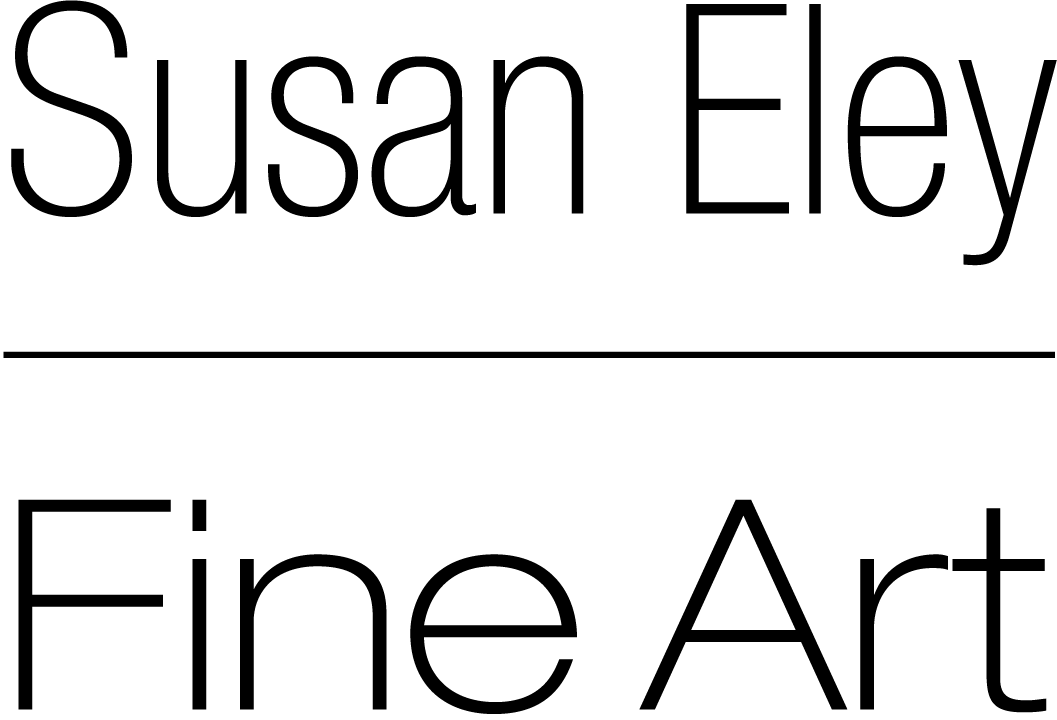September 7th, 2024
“Eighteen” Reviewed by Taliesin Thomas in “Chronogram”
SEFA was recently featured in Chronogram! Their original text by Taliesin Thomas is available online here.
Our exhibition Eighteen is on view at our Hudson location through October 13th.


“Eighteen”: Paintings by Ted Dixon at Susan Eley Fine Art
Through October 13
By Taliesin Thomas
In late August I had the pleasure of meeting painter Ted Dixon for the first time. A small group of us met to break bread together before an artist talk at Susan Eley Fine Art in Hudson, including the lovely and tenacious Eley herself and the powerhouse Savona Bailey-McClain, executive director and chief curator at the West Harlem Art Fund and co-moderator of the gallery conversation with me.
During our lively meal, Dixon spoke enthusiastically about his emotional process during the six months that it took to create the suite of 18 paintings—plus one footnote work titled Origins (2024)—that embody his engagement with The 1619 Project: A New Origin Story (2019), the Pulitzer Prize-winning book by Nikole Hannah-Jones. With The 1619 Project as the arduous foundation for his artistic explorations, Dixon created the “Eighteen” exhibition, a body of work that references the 18 chapter titles of the book that candidly reframe US history and the consequences of slavery for a contemporary audience.
Dixon also shared with us a poignant story about the reality of driving around the country in his youth. He clarified that his family did not adventure South in the car (he was born in New York City) for fear of race-based confrontations, whereas his wife Sheila and her family (both are from families of seven children) piled into their sedan and made the annual road trip to Florida (she is white). They smiled lovingly at each other as they spoke of their distinct experiences. However, their paired anecdotes spoke volumes about the cultural narrative in our country—and it was a powerful prelude to seeing Dixon’s show.
The sun setting, we headed over to the gallery, welcomed a kind crow
d, and soon dove into a dialogue with Dixon on the essence of his abstract-expressionist style and the context of the dynamic paintings that empowered the room. He spoke of the impassioned roller coaster that he went through while reading the book and working on the series, citing bouts of anger that tore through his psyche and admitting that he had to walk away from the entire project a few times in order to return to it with renewed strength. With titles that refer to the themes of The 1619 Project, including Capitalism, Sugar, Fear, Citizenship, and Punishment (all works 2024), Dixon’s paintings express the complexity of the Black-American experience through stern and spirited compositions that together sing a sturdy song of intensity, recognition, hope, and healing.
Despite the gravitas of “Eighteen” and its many layers of social entanglement as embodied by the rawness of paint on canvas, Dixon’s joyful energy infuses his work with unwavering determination and care. His artistic candor provides a sacred space for encountering the downright difficult topics concerning race and the gruesome realities that haunt our nation. Where nuanced works such as Dispossession and Democracy lean into the heaviness with labored, dark tones and frenzied mark-making (the later featuring abstract figures with nooses around their necks), othe
r works such as Justice (laden with stars and stripes) and Music (vibrating like a Rothko) illuminate a sense of fortitude and forward-facing purpose.
Toward the end of the artist talk, Dixon’s face lit up as he pointed across the room to Church, a bright painting with four crosses that hover above a yellow chapel symbolically suspended in time. He spoke of the significance of that particular piece as he held his heart and closed his eyes and referenced the song “Back Pew” by Lily Rose as a source of inspiration. The next day I looked up the tune and found myself weeping to the country-infused aria that echoed Dixon’s own sentiments about personal transcendence through art: “The most challenging moments of a painting are often the most pleasing.”














